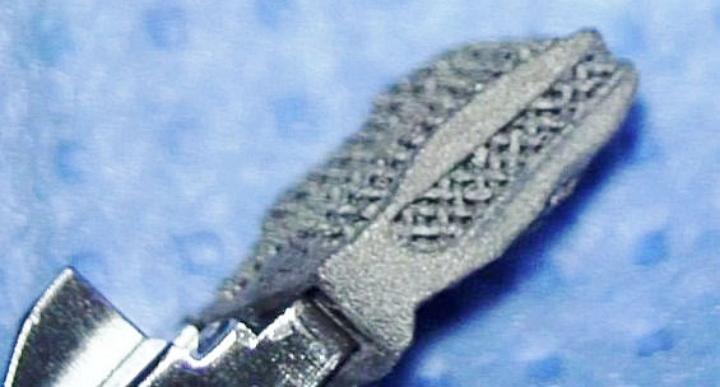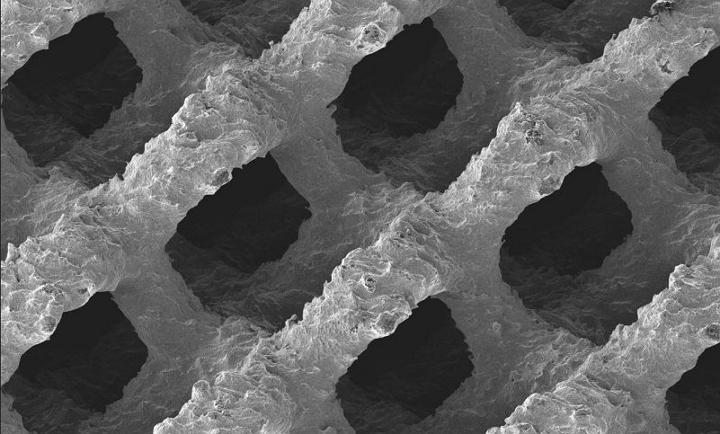
Dr. Uwe Spetzger and his team at the Department of Neurosurgery of the Klinikum Karlsruhe in the operating theater.
Spinal fusion surgeries in the United States have increased by 70 percent between 2001 and 2011. While those numbers are due in large part to the aging of the American population, they’re also due to advances in technology like additive manufacturing.
The problem with such surgeries has always been that, traditional methods which require bone grafts and the implantation of metal hardware often lead to complications like implant migration and broken implants. Such complications often require yet another operation and bring with them the inherent dangers of complex interventions .
Now for what Dr. Uwe Spetzger, a Professor and Chairman of the Department of Neurosurgery of the Klinikum Karlsruhe in Germany says is the first time ever, a patient suffering with a degenerative cervical spine issue has received a 3D printed, “titanium fusion” implant.
Spetzger was responsible for the planning and execution of the treatment, and the implant he used during the procedure was designed by EIT Emerging Implant Technologies, a company developing the cutting edge in 3D printed implant solutions.
Working in conjunction with 3D Systems, EIT used additive manufacturing to fabricate an exacting replication of the trabecular bone structure which includes nanostructural features which promote the healing and fusion of the patient’s bones. The biomechanical properties of the implant allow for ingrowth into existing bone and this prevents the need for additional bone graft treatment.
“We are fascinated by the possibilities of this new technology combining modern computer-aided design and custom-made manufacturing of a high-tech cervical implant,” Spetzger said of the project. “The future of patient-individualized spinal implants has begun.”
Manufactured via selective laser melting, the titanium implant has up to 80 percent porosity and essentially provides “scaffolding” ideal for growing bone cells and vascular structures. The implant was designed and built to mimic trabecular bone structure and specially fabricated for the individual patient. In practice, it means the implant is far less likely to shift or destroy the structural integrity of surrounding bone. Researchers say the method also prevents delays in the process of fusion.
According to Stephanie Eisen, the CEO of EIT, this breakthrough represents a change in how implantation will happen in the future.
“In two to three years years, we’ll be able to provide individualized, series implants at reasonable cost,” Eisen says. “Individualization will deliver better implants, faster and easier surgery and better patient outcome. The reoperation rates in spine surgery are by far higher than for example with hip or knee implants. It is our mission to change this.”
EIT say they’ll offer a complete spinal fusion cage solution in the very near term, and they add that plans are already in the works to develop patient-specific implants for the treatment of other complex spinal disorders.
 Do you know of any other groundbreaking work being done in the biomedical field which uses additive manufacturing processes? Let us know in the 3D Printed Titanium Spinal Fusion Implant forum thread on 3DPB.com.
Do you know of any other groundbreaking work being done in the biomedical field which uses additive manufacturing processes? Let us know in the 3D Printed Titanium Spinal Fusion Implant forum thread on 3DPB.com.

Subscribe to Our Email Newsletter
Stay up-to-date on all the latest news from the 3D printing industry and receive information and offers from third party vendors.
You May Also Like
3D Printing Webinar and Event Roundup: May 5, 2024
We’ve got a busy week of 3D printing events ahead of us, in Texas, Florida, Washington, D.C., Shanghai, and more. Webinar offerings will cover medical models, PolyJet 3D printing, additive...
ASTM/ISO Meetings Bring 3D Printing Experts on Quintus Technologies & OSU Facility Tours
I recently attended the biannual ASTM F42/ISO TC 261 meetings at The Ohio State University in nearby Columbus, Ohio. It was one of the most well-organized industry events I’ve ever...
ARRIS Raises $34M for Composites 3D Printing from Bosch and Others
ARRIS Composites, a Berkeley-based supplier of parts made from composites using a proprietary production process, has raised $34 million in a funding round participated in by companies including Bosch Ventures...
New EOS Responsible Manufacturing Portfolio Includes Material Recycling and Reduced-CO2 Aluminum
Members of the additive manufacturing industry often tout the technology’s green credentials, but only pay lip service to inherent issues with energy use and material sourcing. EOS is doing more...
































